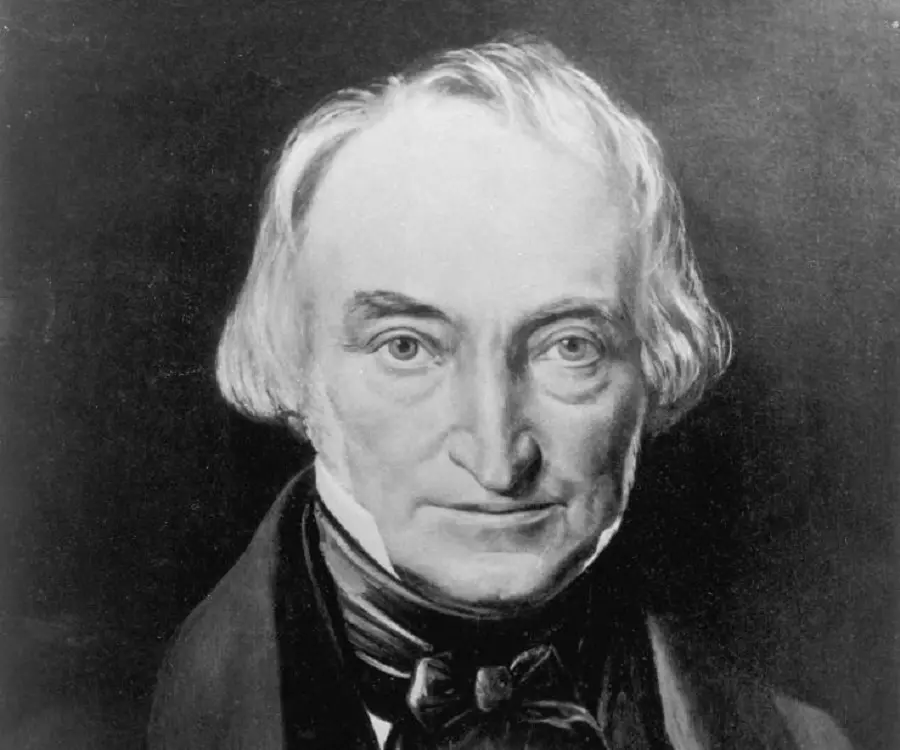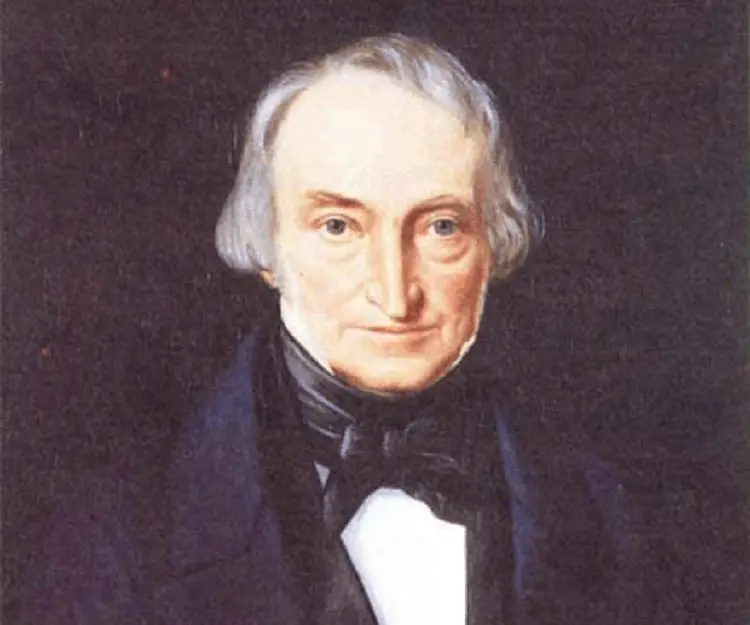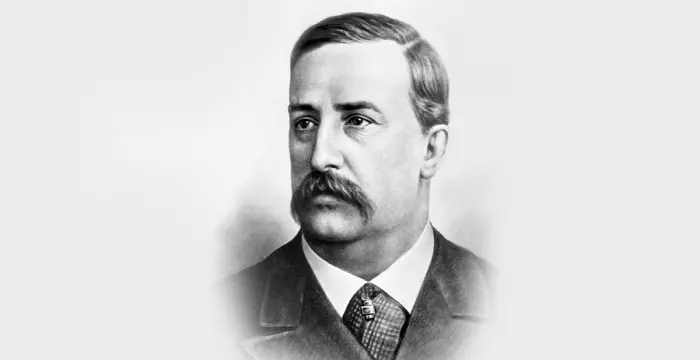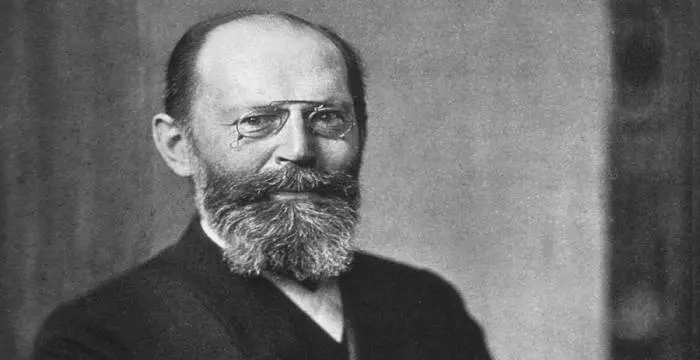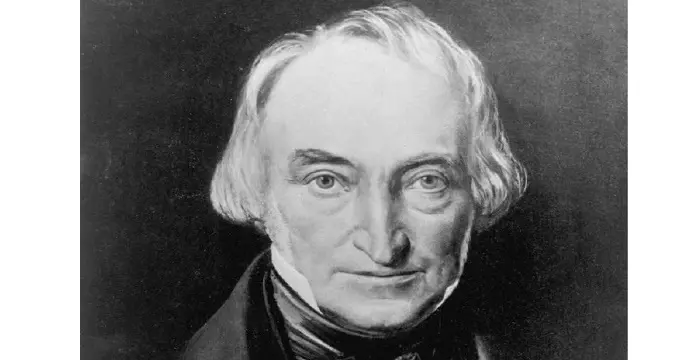
William Christopher Zeise - Organic Chemists, Birthday and Family
William Christopher Zeise's Personal Details
William Christopher Zeise was a Danish organic chemist who discovered the Zeise’s salt
| Information | Detail |
|---|---|
| Birthday | October 15, 1789 |
| Died on | November 12, 1847 |
| Nationality | Danish |
| Famous | Scientists, Chemists, Organic Chemists |
| Birth Place | Slagelse, Denmark |
| Gender | Male |
| Sun Sign | Libra |
| Born in | Slagelse, Denmark |
| Famous as | Organic Chemist |
| Died at Age | 58 |
// Famous Scientists
Juliane Koepcke
Juliane Koepcke is a German-Peruvian biologist, who was the lone survivor among the 92 passengers and crew of the ill-fated LANSA Flight 508 that crashed in the Peruvian rainforest on 24 December 1971. Know more about her life in this biography.
Henry Cavendish
Henry Cavendish was a theoretical chemist and physicist, renowned for discovery of hydrogen and calculation of the mass of earth. To know more about his childhood, profile, timeline and career read on
Konstantin Tsiolkovsky
Konstantin Tsiolkovsky was a Russian rocket scientist and a pioneer of astronautics. This biography provides detailed information about his childhood, family, personal life, career, achievements, etc.
William Christopher Zeise's photo
Who is William Christopher Zeise?
William Christopher Zeise was a prominent Danish organic chemist who is credited for synthesizing the first synthetic organometallic compound, which he named ‘sal kalicoplatinicus inflammabilis’. Today, the salt bears his name and is popularly referred to as Zeise's salt. Born to pharmacist father, Zeise developed an interest in natural science while at secondary school. He moved to Copenhagen where he trained under Gottfried Becker as a pharmacy assistant at the Royal Court Pharmacy. Frail health forced him to return to his homeland but not for long. Zeise resumed his studies at the University of Copenhagen with a greater fervour for chemistry. He did not aim to be just a court apothecary. Following his doctoral thesis, Zeise researched intensively. His investigations of organic sulfur compounds led to the discovery of a new class of organic compounds xanthates, which were isolated as yellow potassium salts in 1823. Other sulfur compounds discovered by him include the thioalcohols or mercaptan and the sulfides or thioethers. Zeise was decorated with the Knight of the Order of the Dannebrog by Danish monarch for his scientific discoveries and investigations.
// Famous Organic Chemists
Dmitri Mendeleev
Dmitri Mendeleev was a Russian chemist who is best known for his discovery of the periodic law. Check out this biography to know about his childhood, life, achievements, works & timeline
Aleksandr Borodin
Aleksandr Borodin was a prodigal Russian music composer and scientist. This biography gives detailed information about his childhood, life, works, achievements and timeline.
Hermann Emil Fischer
Emil Fischer was a Nobel Prize winning chemist from Germany who is known for inventing the ‘Fischer Projection’ method. To know more about his childhood, career, profile and timeline read on
Childhood & Early Life
William Christopher Zeise was born on October 15, 1789, in Slagelse, Denmark, to Frederick Zeise and Johanna Helena Hammond. His father, who was a friend of physicist Hans Christian Ørsted, was an apothecary by profession.
Young Zeise gained his early education at the Slagelse Latin School. In 1805, he moved to Copenhagen where he apprenticed as a pharmacy assistant under Gottfried Becker at the Royal Court Pharmacy. The apprenticeship, however, did not last long due to his frail health as he returned home after a few months.
Upon returning home from Copenhagen, he developed an interest in natural philosophy. He engaged himself in reading scientific papers. He briefed himself about the quantitative chemical theory by Antoine Lavosier, Gren's Chemistry, Adam Hauch's Priniciples of Natural Philosophy and Ørsted's papers in Scandinavian Literature and Letters
In 1806, he rearranged his father's pharmacy according to the new pharmacopoeia of 1805, which had imposed the antiphlogistic nomenclature. Zeise made up his mind to return to Copenhagen to pursue his deep-seated desire of studying chemistry and contributing significantly in the field.
By the autumn of 1806, he moved to Copenhagen, where he stayed at Ørsted’s family home. He served as an assistant to Ørsted, helping the latter in preparing university lectures. Ørsted cast a profound influence on the mind of Zeise. The association with Ørsted lasted for several years until Zeise resolved to take up university entrance examination.
In 1809, he became a university student. He first intended to study medicine but realized that his interests his interests had a broader scientific base. As such, he studied medicine, physics, and chemistry.
In 1815, he graduated with a degree in pharmacy. Following year, he received his master’s degree. In 1817, he submitted his doctoral thesis on ‘the effect of alkalies upon organic substances’.
Career
Following his doctoral degree, William Christopher Zeise moved abroad as the University of Copenhagen had no separate lecturing chair in chemistry and no scientific laboratory for the subject. Having obtained some money, Zeise reached Gottingen. He spent the first four months researching at Friedrich Stromeyer's laboratory.
After a short stay at Gottingen, he moved to Paris, where he stayed for a year. In Paris, he befriended distinguished Swedish chemist Jöns Jacob Berzelius. Interestingly, the two shared a great rapport. Berzelius had high admiration for Zeise and highly praised his doctoral thesis.
Following his stint abroad, he returned to Copenhagen in the autumn of 1819. Until then, things had not changed at the university. Despite being the only trained chemist in Denmark, he had no bright prospects for an appointment.
He collaborated with Ørsted and the two with the help of public funds furthered his work in science. Zeise converted the kitchen of the apartment in Norregade that the university had rented for use as a physics workshop, into his little laboratory that he named, Royal Science Laboratory. He trained ten students in the first year.
In 1822, he was appointed extraordinary Professor of Chemistry. Following year, at his small but efficiently equipped laboratory, Zeise identified a new family of sulfur-containing compounds. He called them xanthates (xanthus in Greek meaning yellow), due to the predominantly yellow colour of xanthate salts. The discovery led to the widespread use of xanthate salts in synthetic chemistry.
In 1824, Ørsted zeroed on a site that eventually became the Danish Polytechnic Education Institution. Originally a farm, the land was transformed. The large stable building in the courtyard served as a chemical laboratory. The college was finally founded in 1829. Zeise played an instrumental role in expanding and organizing the chemical laboratory.
In 1830, he tried to react platinum chloride with ethanol. The reaction led to a series of platinum-based organometallic compounds; one such compound, which he called ‘sal kalicoplatinicus inflammabilis’, today bears his name and is popularly referred to as Zeise's salt. The discovery of the salt stirred a controversy between Zeise and Justus von Leibiz, a German chemist.
The decade of 1830s saw him work on metals, compounds and chemicals. He made several scientific discoveries during this time. In 1832, he discovered thioalcohols (thiols) which he named mercaptans as they formed insoluble mercury salts (corpus mercurium captans). Following year, he discovered thioethers.
Zeise’s last published work showcased his attempt of purifying the pigment carotene from carrot juice in Polytechnic Institute. Through his research, he discovered the fact that the pigment was soluble in carbon disulphide and correctly identified it as hydrocarbon.
Major Works
Zeise most remarkable scientific discovery came when he synthesized the first synthetic organometallic compound, Zeise’s salt. Originally named ‘sal kalicoplatinicus inflammabilis’, the salt was eventually named after him. However, this was not the only scientific discovery made by him. Zeise’s investigations of organic sulfur compounds led to the discovery of a new class of organic compounds xanthates, which were isolated as yellow potassium salts. He also discovered thioalcohols or mercaptan and the sulfides or thioethers.
Awards & Achievements
Zeise was a member of the Royal Danish Academy of Sciences and Letters. He received a silver medal by the Academy.
In 1836, he was crowned with one of the highest honours, Knight of the Order of the Dannebrog by the Danish monarch.
Personal Life & Legacy
William Christopher Zeise tied the nuptial knot in February 1842 with Maren Martine Bjerring.
He suffered from frail health all through. This was probably because of his handling of noxious chemicals in poorly ventilated rooms.
He breathed his last on November 12, 1847 in Copenhagen, Denmark.
Zeise is counted amongst the group of organic chemists who laid the foundations of scientific organic chemistry in the first half of the nineteenth century.
// Famous Chemists
Henry Cavendish
Henry Cavendish was a theoretical chemist and physicist, renowned for discovery of hydrogen and calculation of the mass of earth. To know more about his childhood, profile, timeline and career read on
Walter Kohn
Nobel Laureate Walter Kohn was an Austrian-born American theoretical chemist and physicist. Check out this biography to know about his childhood, life, achievements, works & timeline.
Jabir Ibn Hayyan
Jabir Ibn Hayyan was a medieval era polymath. Check out this biography to know about his life, works and achievements.
William Christopher Zeise biography timelines
- // 15th Oct 1789William Christopher Zeise was born on October 15, 1789, in Slagelse, Denmark, to Frederick Zeise and Johanna Helena Hammond. His father, who was a friend of physicist Hans Christian Ørsted, was an apothecary by profession.
- // 1805Young Zeise gained his early education at the Slagelse Latin School. In 1805, he moved to Copenhagen where he apprenticed as a pharmacy assistant under Gottfried Becker at the Royal Court Pharmacy. The apprenticeship, however, did not last long due to his frail health as he returned home after a few months.
- // 1805 To 1806In 1806, he rearranged his father's pharmacy according to the new pharmacopoeia of 1805, which had imposed the antiphlogistic nomenclature. Zeise made up his mind to return to Copenhagen to pursue his deep-seated desire of studying chemistry and contributing significantly in the field.
- // 1806By the autumn of 1806, he moved to Copenhagen, where he stayed at Ørsted’s family home. He served as an assistant to Ørsted, helping the latter in preparing university lectures. Ørsted cast a profound influence on the mind of Zeise. The association with Ørsted lasted for several years until Zeise resolved to take up university entrance examination.
- // 1809In 1809, he became a university student. He first intended to study medicine but realized that his interests his interests had a broader scientific base. As such, he studied medicine, physics, and chemistry.
- // 1815 To 1817In 1815, he graduated with a degree in pharmacy. Following year, he received his master’s degree. In 1817, he submitted his doctoral thesis on ‘the effect of alkalies upon organic substances’.
- // 1819Following his stint abroad, he returned to Copenhagen in the autumn of 1819. Until then, things had not changed at the university. Despite being the only trained chemist in Denmark, he had no bright prospects for an appointment.
- // 1822In 1822, he was appointed extraordinary Professor of Chemistry. Following year, at his small but efficiently equipped laboratory, Zeise identified a new family of sulfur-containing compounds. He called them xanthates (xanthus in Greek meaning yellow), due to the predominantly yellow colour of xanthate salts. The discovery led to the widespread use of xanthate salts in synthetic chemistry.
- // 1824 To 1829In 1824, Ørsted zeroed on a site that eventually became the Danish Polytechnic Education Institution. Originally a farm, the land was transformed. The large stable building in the courtyard served as a chemical laboratory. The college was finally founded in 1829. Zeise played an instrumental role in expanding and organizing the chemical laboratory.
- // 1830In 1830, he tried to react platinum chloride with ethanol. The reaction led to a series of platinum-based organometallic compounds; one such compound, which he called ‘sal kalicoplatinicus inflammabilis’, today bears his name and is popularly referred to as Zeise's salt. The discovery of the salt stirred a controversy between Zeise and Justus von Leibiz, a German chemist.
- // 1832The decade of 1830s saw him work on metals, compounds and chemicals. He made several scientific discoveries during this time. In 1832, he discovered thioalcohols (thiols) which he named mercaptans as they formed insoluble mercury salts (corpus mercurium captans). Following year, he discovered thioethers.
- // 1836In 1836, he was crowned with one of the highest honours, Knight of the Order of the Dannebrog by the Danish monarch.
- // Feb 1842William Christopher Zeise tied the nuptial knot in February 1842 with Maren Martine Bjerring.
- // 12th Nov 1847He breathed his last on November 12, 1847 in Copenhagen, Denmark.
// Famous Libra Celebrities peoples
Melissa Brim
Melissa Brim is the ex-girlfriend of former professional boxer Floyd Mayweather Jr. Check out this biography to know about her birthday, childhood, family life, achievements and fun facts about her.
Jacob Tremblay
Jacob Tremblay is a Canadian child actor. Let’s have a look at his family & personal life including age, birthday, relationships, net worth and fun facts.
Sierra Furtado
Check out all that you wanted to know about Sierra Furtado, the famous YouTube Personality; her birthday, her family and personal life, her boyfriend, fun trivia facts and more.
Sexxy Lexxy
Alexis Smith Walker, popularly known as Sexxy Lexxy, is an African-American singer. Check out this biography to know about her birthday, childhood, family life, achievements, and fun facts about her.
Benjamin Keough
Benjamin Keough is an American socialite who is best known as the grandson and look-alike of legendary musician Elvis Presley.
Lizzie LDShadowLady
Check out all that you wanted to know about Lizzie LDShadowLady, the famous YouTuber and gamer; her birthday, her family and personal life, her boyfriend, fun trivia facts and more.
William Christopher Zeise's FAQ
What is William Christopher Zeise birthday?
William Christopher Zeise was born at 1789-10-15
When was William Christopher Zeise died?
William Christopher Zeise was died at 1847-11-12
Which age was William Christopher Zeise died?
William Christopher Zeise was died at age 58
Where is William Christopher Zeise's birth place?
William Christopher Zeise was born in Slagelse, Denmark
What is William Christopher Zeise nationalities?
William Christopher Zeise's nationalities is Danish
What is William Christopher Zeise's sun sign?
William Christopher Zeise is Libra
How famous is William Christopher Zeise?
William Christopher Zeise is famouse as Organic Chemist



